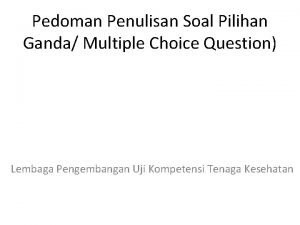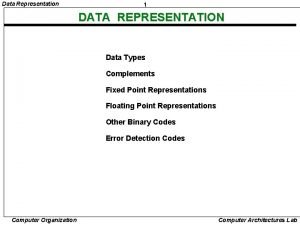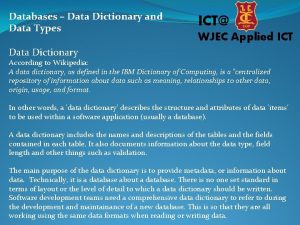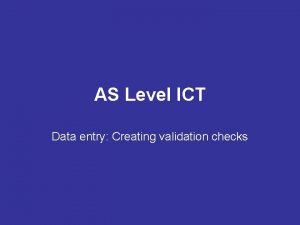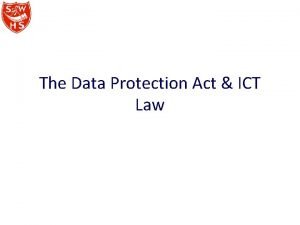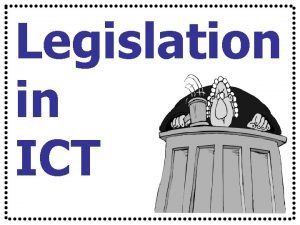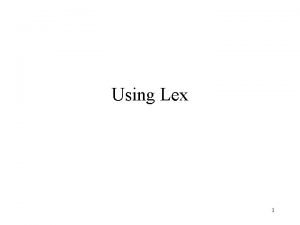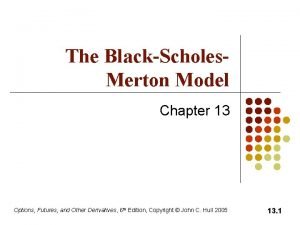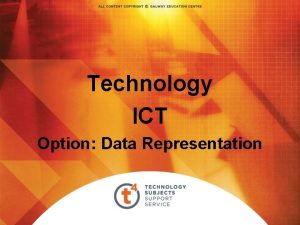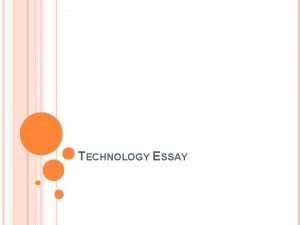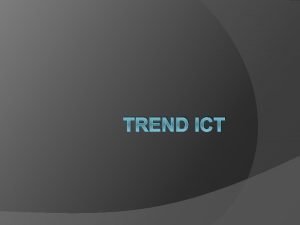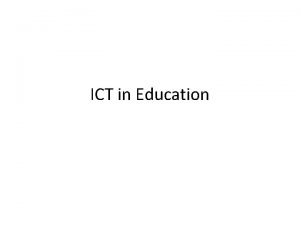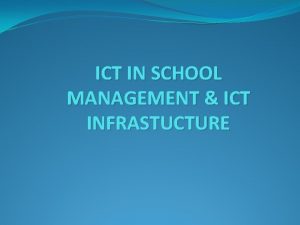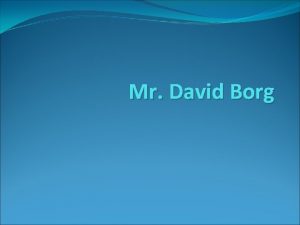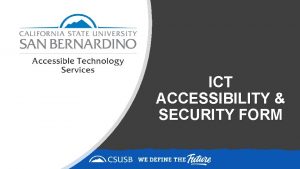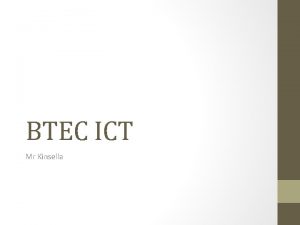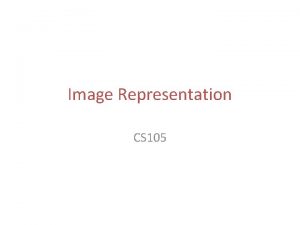Technology ICT Option Data Representation Data Representation In












- Slides: 12

Technology ICT Option: Data Representation

Data Representation In our everyday lives, we communicate with each other using analogue data. This data takes the form of: • • • Sound Images Letters Numbers Colours etc. This type of data can vary and because of this, it cannot be easily represented in a computer.

Data Representation Computer - electronic device - handles binary data Transistors represent the binary data. • • Transistor is on - binary 1 Transistor off - binary 0. Using transistors, binary codes are devised to represent numbers, letters, colours, sounds etc. In this binary system, each 0 or 1 is called a binary digit (Bit). By placing them side by side, we can create binary codes 0 1 Bit 10 2 Bit 1011 4 Bit 10010011 8 Bit

Data Representation If we extend this system, we could use it to represent numbers. From the right-hand side, the binary digits could represent the numbers 128, 64, 32, 16, 8, 4, 2, 1 etc. Decimal Number Binary 0 0 12 1100 1 1 16 10000 2 10 32

Data Representation From the numbers example, we can see that the computer can handle data as long as it is presented in binary form. The analogue numbers have become digital data. If it was possible to create codes to represent all our analogue data, it would appear as groups of 0’s and 1’s and could be converted to digital data. The computer could then handle this data. This conversion process is called digitising data: RED Is there anybody there, said the traveller, knocking on the 101101001001000100001011010101111000 101010001010011111001 0101010101010011 100101011110101010 00101001010010100011

Data Representation Word-procressing is the most basic type of data processing. In Wordprocessing, the keyboard holds the character set which includes: • • • The alphabet in upper and lower case The numbers from 0 to 9 Misc. characters - space, &, %, £, €, ½, ? Etc. To digitise these characters, a sequence of 8 -Bits (0’s and 1’s) is allocated to each character. This sequence of 8 -Bits is called a Byte. A Byte is the amount of storage required to store one character from the character set.

Data Representation It is possible to represent 256 characters using this system. A Byte sequence is assigned to each character on the keyboard and there are lots to spare for special characters etc. These Byte codes can be set in a table to produce the American Standard Code for Information Interchange (ASCII). If a character from the table is typed into the computer, it will occupy 1 Byte of the computers main memory (RAM) and if it is saved to a disk drive, it will occupy 1 Byte of storage space. Therefore: • • • T 4 is 2 Bytes long Technology is 10 Bytes long Design and Communications Graphics is 34 Bytes long (the 3 spaces count)

Data Representation In the ASCII table, the bit sequences (codes) are listed in Binary and each code is named according to its Decimal value: The 256 codes are divided into sections: • • • 0 to 31 - System codes - Esc (27), Backspace (8) 32 to 127 - Lower ACSII - common keyboard characters. 128 to 254 - Higher ASCII - Newer codes like the € and language symbols

Data Representation When the computer keyboard is being used, the ASCII codes are sent to the computer as the characters are typed: 0101010000110100 The computer combines the stream of Bits into Bytes: 01010100 and 00110100 These are then converted to ASCII numbers (84 and 52) and displayed on screen: T 4

Data Representation Not all data can be represented as characters To process images and sound in a computer, they must be represented as binary codes. An image can be represented as a map of binary codes If the image is zoomed, the individual pixels can be seen as either black or white. In a black and white image, only 1 Bit is needed to represent each pixel as the pixel can only be black or white.

Data Representation This is called a Bitmapped image as the bits used to represent the image arranged into a grid of Bits A more complex image is shown below and the grid and map of Bits is clearly visible: The only difference between this and a colour image is the number of Bits needed to represent each pixel In 24 -bit colour, 24 Bits are needed for each pixel etc

Data Representation Sound can also be stored in a computer as binary codes Analogue sound is represented as a wave. To represent the varying values of a soundwave, it’s height must be measured at regular intervals and the measurements given binary codes. This process is called Sampling and the number of samples taken in a second is called the sampling rate Amplitude The sampled measurements make up the digital sound file Analogue signal Time Sampling rate
